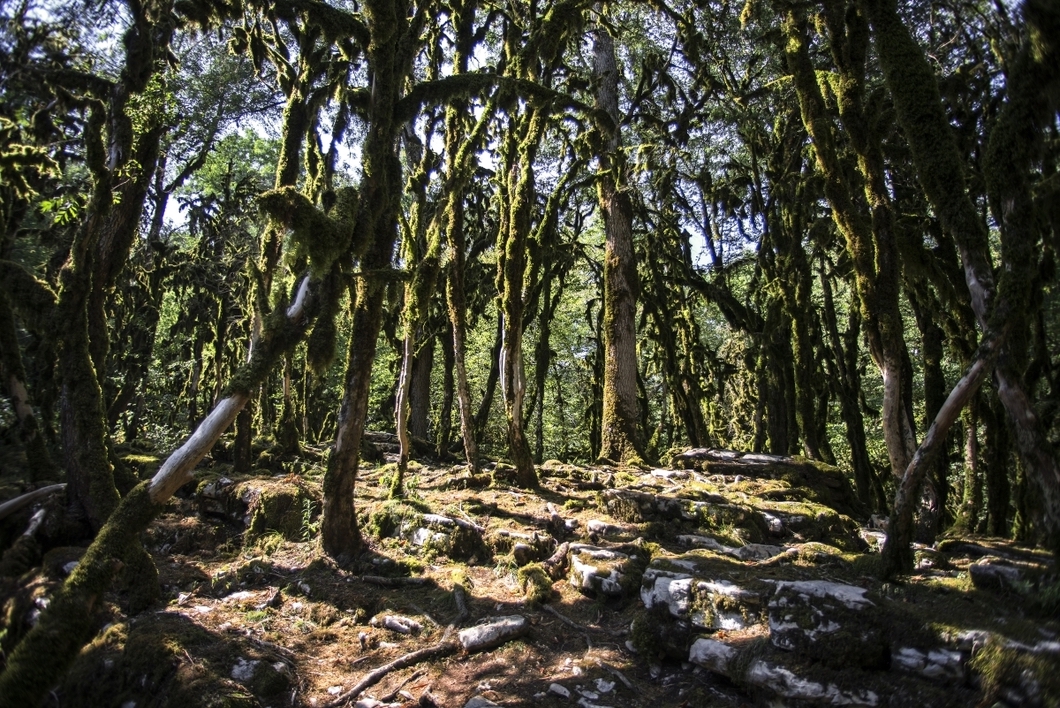Hundreds of years needed to restore the forest all for the sake of one olympiad

Based on the materials of Novaya Gazeta.
The Colchian boxwood is a relict plant. There is paleontological evidence that it began to grow in the Caucasus more than thirty million years ago.
The boxwood’s troubles began five years before the Sochi Olympics, when there was large-scale construction. Since then, the environmental situation there has seriously deteriorated. The boxwood forests were weakened by infectious diseases, and when they built the railway and the highway from Adler to Krasnaya Polyana, massive portions of forest were cut down.
In Autumn 2012, boxwood evergreens were brought from Italy for the Olympic village. These were a park variety of the plant. Caterpillars and larvae of pyralid moths were accidentally brought to the region on the roots of the purchased trees. These pyralidae feed on the leaves and bark of all varieties of boxwood, and nothing else.
Phytocontrol laws were violated when the plants were imported, whereafter specialists from the Sochi National Park had to be called for inspection. They immediately said that the trees that arrived must be burned, otherwise they would pose a catastrophic threat. They said this, but no one listened. The infected trees were planted at the Olympic village and all around Sochi.
Until the Autumn of 2012, there were no pyralid moths in the Sochi region, and in that climate, they have no natural enemies. Not even local bird species will feed on pyralid caterpillars, because they are protected by hair and are poisonous. The imported species, which began to spread uncontrollably due to a favorable climate and the absence of natural enemies, is considered ‘invasive’ by scientists.
At first, the pyralid moths ate all of the boxwoods planted in Sochi. Specialists from the Sochi National Park recorded this and reported it to the Ministry of Nature of the Russian Federation. In order to save the natural boxwood forests in the Krasnodar region from dying, scientists asked officials for permission to treat the affected trees with pesticide. The Ministry of Natural Resources refused. They referenced the federal law on ‘Specially Protected Natural Territories’, which prohibits the use of chemicals.
The first ‘distinctive leaf bite marks’ were found at the reserve by employees of the Sochi National Park in September 2013, and then in September 2014 in the famous Tiso-Boxwood grove in Khost. The pyralidae ate all boxwoods in an area of 182 hectares. It was one of the most popular tourist destinations in Sochi.
Now the grove looks like a forest probably would after a nuclear winter.
All around are the dead skeletons of boxwoods with hanging garlands of green moss. Before, low shade-loving underbrush grew beneath the canopy. They have since withered away from direct sunlight as a result of the boxwoods’ deaths. No matter how far you go into the grove’s depths, you will not find one living boxwood. Many of the trees didn’t even have bark. You won’t even come across a caterpillar. They ate everything and crawled away.
Public and political activist and former council member of the ‘Ecological Watch for the North Caucasus’ Evgeny Vitshko talked about the death of the boxwood grove in Khost, and the officials’ lack of action:
“There were already pyralidae in all forest areas of the region in 2014. Not in single cases as before, but up to 90% were affected. Once again, they wrote to the Ministry of Natural Resources to sanction pesticides, and once again they refused.”
In a month and a half (from August to September 2014), the threat of extinction for the Colchian boxwood species changed from ‘threatened’ to ‘critical’. The Ministry of Natural Resources responded: “Repeated attention has been drawn to the fact that according to Federal Law, the use of pesticides on the territory of state reserves and national parks is prohibited. It is recommended to consider the possibility of developing mechanical and biological methods to fight these caterpillars.”
Officials later explained to the specialists at the national park that biological preparations are not included in these methods because they too are considered pesticides.
By 1 October 2014, pyralid moths occupied 253 hectares of boxwood forest out of 1 863. At the same time, contaminated sites appeared in Novorossiysk, Krasnodar, Armavir, Maikor, and other areas in the Krasnodar region including Adygea.
After the Ministry of Nature’s repeated refusal, employees of the Sochi National Park began making biological attempts to combat the pyralidae. As a result, they managed to save small areas of boxwood forests, which are constantly exposed to moth attacks.
Boris Tuniev, the Director of Science at the Sochi National Park said: “We tried a lot, but nothing could help against such a large population. In our climate, the pyralid moth has up to four generations in one year, and they handle winter perfectly here. Pesticides are used to fight them all over the world, but here we are being forced to devise something different.”
“Everyone is now holding meetings in the Ministry of Natural Resources, and looking for someone to blame,” Tuniev said, “and all that can be done is to give the remains of the boxwood to the moths to eat. Stop treating, and try to save it. Give them everything to gobble up and wait for them to die of hunger. This species is a monophage, meaning there is nothing else it can eat. No boxwoods, no pyralidae. In parallel, it is necessary to create seed reserves and closed reserves and nurseries. Treat them with pesticides and gradually restore their strength. This will take more than a hundred years.”



















